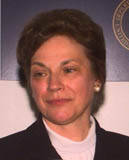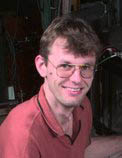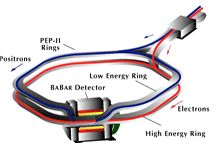|
From The Sun, January 2, 2004 Scientific dreams can come true By Louise Brass For the past 20 years, more than 40 fixed-target experiments at Fermilab
using Tevatron beams of protons also have helped keep the Tri-Cities moving.
The 20th anniversary of Tevatron, a technology involving silicon microstrip
detectors that was first used to send a beam from the Energy Doubler
apparatus, was celebrated by scientists in 2003, said Mike Witherell, who
was there since the beginning of the high-level experiments. The research is
done to understand pions, muons, photons, hyperons and neutrinos, and to
expand humankind's knowledge of particles and forces that move them.
From The Washington Times, December 31, 2003
British physicist Tim Berners-Lee, who invented the World Wide Web -- or at
least better access to it -- has been awarded a knighthood in London.
Berners-Lee, 48, was named in the New Year's Honors List for "services to
the Internet" -- creating the system that has revolutionized computer use
across the globe. He devised the system in his spare time in 1991 while
working as a researcher at the European particle research laboratory Cern,
which is based in Switzerland.
From the Courier News in Elgin, December 31, 2003
In November, Arlene Lennox, the first woman to receive a Ph.D. in elementary physics from the University of Notre Dame, gave a talk on hadron therapy for cancer treatment.
From The New York Times, December 30, 2003
Particle physicists are known as the demolition crews of the very small,
smashing tiny bits of matter together to find the even tinier bits that they
are made of. So it may come as a surprise that the field has recently found
a powerful new engine of discovery: gluing it all back together again,
sometimes in weird ways that seldom occur in nature, if ever. The glue
linking these discoveries is the "strong force," which is normally relegated
to holding together quarks, the building blocks of humdrum particles like
protons and neutrons. But theorists have long suspected that the strong
force has a wild side.
From Tech Central Station, December 30, 2003 Leap years have a certain appeal, with their combination of presidential elections, Summer Olympics, and an extra day of life. Here is a selective guide to some of the more interesting events involving science and technology that are in prospect for 2004:
Neutrino Mass. Neutrinos are ghost-like subatomic particles that interact little with other forms of matter (as you read this, countless neutrinos are passing through your body). The Fermi National Accelerator Lab is spearheading the NuMI-MINOS project, to determine whether neutrinos have
mass.
From the Miami Herald, December 24, 2003:
Scientists think they have figured out how Santa Claus does it. Santa can zip around the world at a speed that, according to Einstein's theory of relativity, should turn Rudolph's nose a blurry blue or warp time and space.
Arnold Pompos, a physics researcher at the Fermi National Accelerator
Laboratory, five years ago came up with a slightly different version.
From DOE Pulse, December 22, 2003
Read more
From The Guardian, December 19, 2003:
A British computer hacker faces five years behind bars and a £21,000 bill from the US government for hacking into a nuclear research lab. Joseph McElroy, 18, was trying to use the immense power of the Fermi National Accelerator Lab in Chicago to help him download music and films from the
web.
|
| last modified 12/30/2003 email Fermilab |
FRLsDFx9eyfrPXgV


